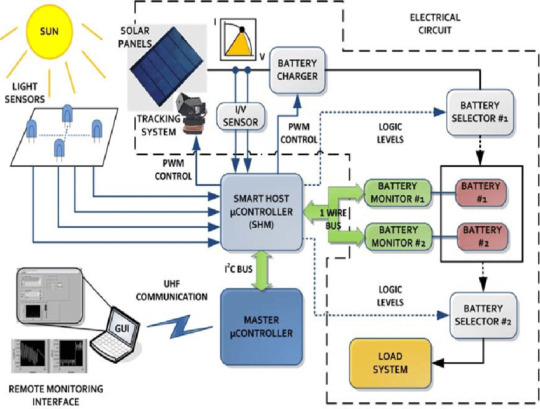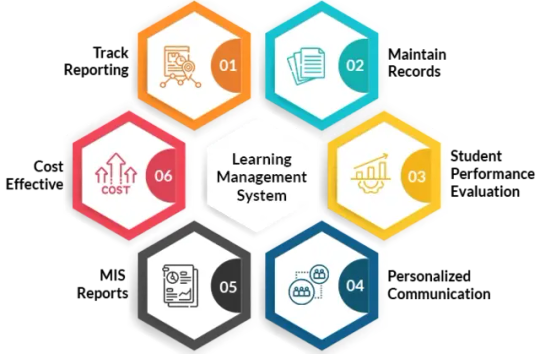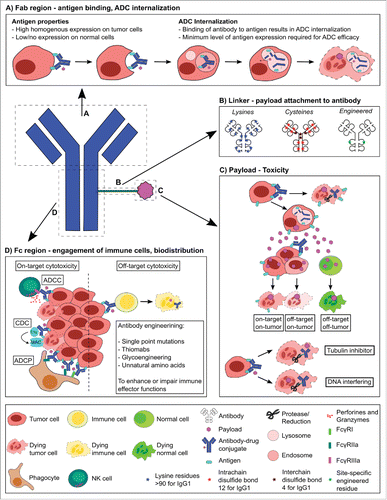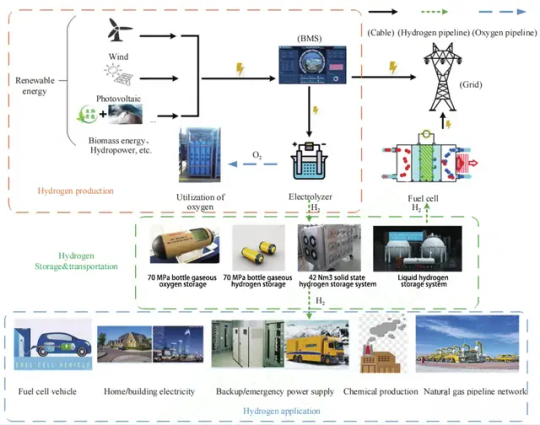Don't wanna be here? Send us removal request.
Text
0 notes
Text
🚀 𝐏𝐨𝐰𝐞𝐫 𝐌𝐚𝐧𝐚𝐠𝐞𝐦𝐞𝐧𝐭 𝐒𝐲𝐬𝐭𝐞𝐦𝐬: 𝐓𝐡𝐞 𝐅𝐮𝐭𝐮𝐫𝐞 𝐨𝐟 𝐄𝐧𝐞𝐫𝐠𝐲 𝐄𝐟𝐟𝐢𝐜𝐢𝐞𝐧𝐜𝐲 𝐚𝐧𝐝 𝐒𝐮𝐬𝐭𝐚𝐢𝐧𝐚𝐛𝐢𝐥𝐢𝐭𝐲 🌱
The global power management system market size was valued at USD 6.5 billion in 2024 and is projected to reach USD 9.69 billion by 2030, exhibiting a compound annual growth rate (CAGR) of 6.9% during the forecast period.
👉 𝐃𝐨𝐰𝐧𝐥𝐨𝐚𝐝 𝐒𝐚𝐦𝐩𝐥𝐞
𝐇𝐞𝐫𝐞 𝐚𝐫𝐞 𝐬𝐨𝐦𝐞 𝐤𝐞𝐲 𝐟𝐢𝐧𝐝𝐢𝐧𝐠𝐬 𝐟𝐫𝐨𝐦 𝐭𝐡𝐞 𝐫𝐞𝐩𝐨𝐫𝐭
𝐈𝐧𝐭𝐞𝐠𝐫𝐚𝐭𝐢𝐨𝐧 𝐰𝐢𝐭𝐡 𝐑𝐞𝐧𝐞𝐰𝐚𝐛𝐥𝐞 𝐄𝐧𝐞𝐫𝐠𝐲: Increasing integration of renewable energy sources like solar and wind into power grids is driving the demand for advanced power management systems. These systems help optimize energy production, storage, and consumption from renewable sources.
𝐒𝐦𝐚𝐫𝐭 𝐆𝐫𝐢𝐝𝐬 𝐚𝐧𝐝 𝐈𝐨𝐓 𝐈𝐧𝐭𝐞𝐠𝐫𝐚𝐭𝐢𝐨𝐧: The rise of smart grids and the Internet of Things (IoT) has facilitated the development of more sophisticated power management systems. These systems enable real-time monitoring, automation, and predictive maintenance, leading to enhanced efficiency and reduced energy waste.
𝐄𝐧𝐞𝐫𝐠𝐲 𝐒𝐭𝐨𝐫𝐚𝐠𝐞 𝐒𝐲𝐬𝐭𝐞𝐦𝐬: The adoption of energy storage solutions such as batteries is growing, driven by the need to store excess power generated by renewable sources. Power management systems are evolving to efficiently manage energy storage and ensure reliable distribution.
𝐌𝐢𝐜𝐫𝐨𝐠𝐫𝐢𝐝𝐬 𝐚𝐧𝐝 𝐃𝐢𝐬𝐭𝐫𝐢𝐛𝐮𝐭𝐞𝐝 𝐄𝐧𝐞𝐫𝐠𝐲 𝐑𝐞𝐬𝐨𝐮𝐫𝐜𝐞𝐬 (𝐃𝐄𝐑𝐬): Microgrids and DERs are becoming more prominent, especially in off-grid areas and industrial sectors. These systems allow localized power management, ensuring energy security and enhancing system reliability.
𝐄𝐥𝐞𝐜𝐭𝐫𝐢𝐜 𝐕𝐞𝐡𝐢𝐜𝐥𝐞 (𝐄𝐕) 𝐈𝐧𝐭𝐞𝐠𝐫𝐚𝐭𝐢𝐨𝐧: As the adoption of electric vehicles increases, there is a greater demand for power management systems that can efficiently handle EV charging infrastructure, ensuring smooth integration with the existing grid.

#powermanagement#energymanagement#smartgrid#renewableenergy#energyoptimization#energystorage#batteryenergy#microgrid#distributedenergy#iot#smartmetering#electricvehicle#evcharging#greentechnology#energyefficiency#sustainability#cleantech#ai#machinelearning#predictiveanalytics#powergrid#demandresponse#cybersecurity#energytransition#smartcities#sustainableenergy
0 notes
Text
𝐓𝐡𝐞 𝐑𝐨𝐥𝐞 𝐨𝐟 𝐌𝐢𝐥𝐥𝐢𝐦𝐞𝐭𝐞𝐫 𝐖𝐚𝐯𝐞 𝐓𝐞𝐜𝐡𝐧𝐨𝐥𝐨𝐠𝐲 𝐢𝐧 𝐄𝐧𝐡𝐚𝐧𝐜𝐢𝐧𝐠 𝐖𝐢𝐫𝐞𝐥𝐞𝐬𝐬 𝐂𝐨𝐦𝐦𝐮𝐧𝐢𝐜𝐚𝐭𝐢𝐨𝐧 - 𝐋𝐚𝐭𝐞𝐬𝐭 𝐈𝐧𝐟𝐨𝐫𝐦𝐚𝐭𝐢𝐨𝐧
🔗 𝑫𝒐𝒘𝒏𝒍𝒐𝒂𝒅 𝑺𝒂𝒎𝒑𝒍𝒆 𝑹𝒆𝒑𝒐𝒓𝒕
Millimeter wave is a kind of electromagnetic technology used in various products such as phones, cars, medical devices, and others to ensure wireless broadband communications at a higher speed. It is known as extremely high frequency (EHF) because it presents signal spectrum ranges from 30GHz to 300GHz with a wavelength between 1 and 10 mm. Moreover, millimeter wave technology provides security for communication transmission.
The advancement in wireless technologies such as high-speed communication, high bandwidth, high-resolution videos and carrying large amounts of data influences the demand for millimeter wave technology due to its capability to enable 5G networks. Technological advances in digital networks connect a number of devices and sensors, which ensures advances in various smart technologies such as cars, smartphones, medical devices, and others. Therefore, the rise in penetration of mobile devices from consumer electronics influences the demand for 5G networks, which further increases the need for millimeter wave technology globally.
However, the adverse impact of millimeter wave technology on the environment presents a significant restraint for the widespread adoption of millimeter wave technology. Rapid deployment of 5G network is one of the key requirements in the millimeter wave technology.
The millimeter wave technology market is analyzed into component, product, license type, frequency band, application, and region. On the basis of component, the market is divided into antenna & transceiver components, frequency sources & related components, communication & networking components, imaging components, rf & radio components, sensors & controls, and others. Based on product type, the market is fragmented into scanner systems, radar & satellite systems, and telecommunication equipment. Based on license type, the market is segregated into light licensed frequency, unlicensed frequency, and fully licensed frequency. Based on frequency band, the market is classified from 24 GHz to 57 GHz, 58 GHz to 86 GHz, and 87 GHz to 300 GHz. Based on application, the market is classified into telecom and datacom, military & defense, automotive, industrial, consumer, medical, and others.

0 notes
Text
𝐂𝐮𝐥𝐭𝐢𝐯𝐚𝐭𝐢𝐧𝐠 𝐭𝐡𝐞 𝐅𝐮𝐭𝐮𝐫𝐞: 𝐓𝐫𝐞𝐧𝐝𝐬 𝐢𝐧 𝐭𝐡𝐞 𝐀𝐠𝐫𝐢𝐜𝐮𝐥𝐭𝐮𝐫𝐞 𝐄𝐪𝐮𝐢𝐩𝐦𝐞𝐧𝐭 𝐌𝐚𝐫𝐤𝐞𝐭-IndustryARC™
The Agriculture Equipment Market Size is forecast to reach $ 296516.4 Million by 2030, at a CAGR of 7.30% during forecast period 2024-2030.
🔗 𝑫𝒐𝒘𝒏𝒍𝒐𝒂𝒅 𝑺𝒂𝒎𝒑𝒍𝒆 𝑹𝒆𝒑𝒐𝒓𝒕
The Agriculture Equipment Market is undergoing a transformation as technological advancements and sustainability goals reshape farming practices. From precision agriculture to automation, the tools farmers rely on are becoming smarter, more efficient, and environmentally friendly.
𝐊𝐞𝐲 𝐓𝐫𝐞𝐧𝐝𝐬
🔹 𝐈𝐧𝐭𝐞𝐠𝐫𝐚𝐭𝐢𝐨𝐧 𝐨𝐟 𝐏𝐫𝐞𝐜𝐢𝐬𝐢𝐨𝐧 𝐀𝐠𝐫𝐢𝐜𝐮𝐥𝐭𝐮𝐫𝐞
Modern equipment now features GPS-guided systems, IoT connectivity, and sensors that enable precise planting, fertilizing, and harvesting, minimizing resource wastage and maximizing yield.
🔹 𝐑𝐢𝐬𝐢𝐧𝐠 𝐀𝐝𝐨𝐩𝐭𝐢𝐨𝐧 𝐨𝐟 𝐀𝐮𝐭𝐨𝐧𝐨𝐦𝐨𝐮𝐬 𝐌𝐚𝐜𝐡𝐢𝐧𝐞𝐫𝐲
Driverless tractors, drones, and robotic harvesters are revolutionizing farming, reducing labor dependency and improving efficiency, especially in large-scale farming operations.
🔹 𝐒𝐮𝐬𝐭𝐚𝐢𝐧𝐚𝐛𝐢𝐥𝐢𝐭𝐲-𝐅𝐨𝐜𝐮𝐬𝐞𝐝 𝐈𝐧𝐧𝐨𝐯𝐚𝐭𝐢𝐨𝐧𝐬
Equipment powered by alternative fuels, such as electric and hybrid tractors, is gaining traction as the agricultural industry aligns with global sustainability targets.
🔹 𝐈𝐧𝐜𝐫𝐞𝐚𝐬𝐞𝐝 𝐃𝐞𝐦𝐚𝐧𝐝 𝐟𝐨𝐫 𝐂𝐨𝐦𝐩𝐚𝐜𝐭 𝐚𝐧𝐝 𝐌𝐮𝐥𝐭𝐢-𝐅𝐮𝐧𝐜𝐭𝐢𝐨𝐧𝐚𝐥 𝐌𝐚𝐜𝐡𝐢𝐧𝐞𝐫𝐲
Farmers with smaller landholdings are favoring compact equipment that can perform multiple tasks, offering cost-effectiveness and versatility.

#AgricultureEquipment#PrecisionFarming#SustainableFarming#AgriTech#FarmInnovation#FoodSecurity#MarketTrends#SmartFarming
0 notes
Text
𝐓𝐫𝐚𝐧𝐬𝐟𝐨𝐫𝐦𝐢𝐧𝐠 𝐄𝐝𝐮𝐜𝐚𝐭𝐢𝐨𝐧: 𝐓𝐫𝐞𝐧𝐝𝐬 𝐢𝐧 𝐭𝐡𝐞 𝐀𝐮𝐬𝐭𝐫𝐚𝐥𝐢𝐚 𝐋𝐞𝐚𝐫𝐧𝐢𝐧𝐠 𝐌𝐚𝐧𝐚𝐠𝐞𝐦𝐞𝐧𝐭 𝐒𝐲𝐬𝐭𝐞𝐦 (𝐋𝐌𝐒) 𝐌𝐚𝐫𝐤𝐞𝐭-IndustryARC™
Australia Learning Management System Market Size is forecast to reach $ 30310 Million by 2030, at a CAGR of 10.70% during forecast period 2024-2030.
🔗 𝑫𝒐𝒘𝒏𝒍𝒐𝒂𝒅 𝑺𝒂𝒎𝒑𝒍𝒆 𝑹𝒆𝒑𝒐𝒓𝒕
The Australia Learning Management System (LMS) Market is experiencing a significant shift as the education sector embraces digital transformation. With the rising demand for flexible learning environments, personalized education, and remote training, LMS platforms are becoming a vital tool for educators, businesses, and learners alike.
𝐊𝐞𝐲 𝐓𝐫𝐞𝐧𝐝𝐬
◾ 𝐑𝐢𝐬𝐞 𝐨𝐟 𝐎𝐧𝐥𝐢𝐧𝐞 𝐚𝐧𝐝 𝐁𝐥𝐞𝐧𝐝𝐞𝐝 𝐋𝐞𝐚𝐫𝐧𝐢𝐧𝐠
The increasing demand for online and blended learning solutions is driving the growth of the LMS market in Australia. With the flexibility to learn anywhere, anytime, these platforms are enhancing the learning experience and making education more accessible.
◾ 𝐈𝐧𝐭𝐞𝐠𝐫𝐚𝐭𝐢𝐨𝐧 𝐨𝐟 𝐀𝐫𝐭𝐢𝐟𝐢𝐜𝐢𝐚𝐥 𝐈𝐧𝐭𝐞𝐥𝐥𝐢𝐠𝐞𝐧𝐜𝐞 (𝐀𝐈)
AI is being integrated into LMS platforms to offer personalized learning experiences. Adaptive learning technologies allow content to be tailored to individual learning styles and paces, boosting engagement and improving outcomes.
◾ 𝐌𝐨𝐛𝐢𝐥𝐞 𝐋𝐞𝐚𝐫𝐧𝐢𝐧𝐠 𝐚𝐧𝐝 𝐌𝐢𝐜𝐫𝐨𝐥𝐞𝐚𝐫𝐧𝐢𝐧𝐠
With the rise of mobile devices, learners in Australia are increasingly using LMS platforms on smartphones and tablets. Mobile learning and microlearning—short, bite-sized content—are gaining popularity for their convenience and effectiveness in today’s fast-paced world.

#LearningManagementSystem#LMS#EdTech#Elearning#AIinEducation#CorporateTraining#MobileLearning#EducationInnovation#MarketTrends
0 notes
Text
𝐒𝐡𝐚𝐩𝐢𝐧𝐠 𝐭𝐡𝐞 𝐅𝐮𝐭𝐮𝐫𝐞 𝐨𝐟 𝐎𝐢𝐥 & 𝐆𝐚𝐬: 𝐓𝐫𝐞𝐧𝐝𝐬 𝐢𝐧 𝐒𝐚𝐧𝐝 𝐂𝐨𝐧𝐭𝐫𝐨𝐥 𝐒𝐲𝐬𝐭𝐞𝐦𝐬-IndustryARC™
The Sand Control Systems Market Size is forecast to reach $ 6054 Million by 2030, at a CAGR of 3.97% during forecast period 2024-2030.
🔗 𝑫𝒐𝒘𝒏𝒍𝒐𝒂𝒅 𝑺𝒂𝒎𝒑𝒍𝒆 𝑹𝒆𝒑𝒐𝒓𝒕 @https://tinyurl.com/34uf2xhp
In the oil and gas industry, sand control systems are essential for preventing the migration of sand into production equipment during extraction processes. These systems ensure operational efficiency, safeguard equipment, and maximize production yields. As exploration moves into more complex environments, sand control technologies are evolving.
𝐊𝐞𝐲 𝐓𝐫𝐞𝐧𝐝𝐬 𝐭𝐨 𝐖𝐚𝐭𝐜𝐡
➡️ Growth in Horizontal and Extended Reach Drilling
The rise of horizontal and extended reach drilling techniques has increased the need for efficient sand control systems. These advanced drilling methods encounter more unstable formations, driving demand for more robust and adaptable sand control solutions.
➡️ Focus on Reservoir Stability
Reservoir stability is a major concern in oil and gas production, especially in mature fields. Sand control systems are evolving to enhance reservoir stability and prevent sand production, ensuring the longevity of wells and reducing operational risks.
➡️ Automation and Smart Systems
Automation is a game-changer for sand control systems. Smart sand control technologies use real-time data from sensors and monitoring systems to adjust operations, ensuring optimal performance and reducing the need for manual intervention.

#SandControl#OilAndGas#DrillingTechnology#PetroleumIndustry#SandManagement#OilFieldTech#EnergyIndustry#WellCompletion#ReservoirManagement#OilExploration
0 notes
Text
𝐋𝐮𝐛𝐫𝐢𝐜𝐚𝐭𝐢𝐧𝐠 𝐭𝐡𝐞 𝐅𝐮𝐭𝐮𝐫𝐞: 𝐈𝐧𝐬𝐢𝐠𝐡𝐭𝐬 𝐢𝐧𝐭𝐨 𝐭𝐡𝐞 𝐕𝐚𝐜𝐮𝐮𝐦 𝐆𝐫𝐞𝐚𝐬𝐞 𝐌𝐚𝐫𝐤𝐞𝐭-IndustryARC™
Vacuum Grease Market Size is forecast to reach $236.7 million by 2030, at a CAGR of 8.50% during forecast period 2024-2030.
🔗 𝑫𝒐𝒘𝒏𝒍𝒐𝒂𝒅 𝑺𝒂𝒎𝒑𝒍𝒆 𝑹𝒆𝒑𝒐𝒓𝒕 @https://tinyurl.com/542zrssr
The Vacuum Grease Market is experiencing steady growth as industries across the globe seek efficient, high-performance lubricants for vacuum systems and equipment. Vacuum grease plays a vital role in sealing and lubricating vacuum pumps, ensuring smooth operation and preventing leaks.
𝐊𝐞𝐲 𝐓𝐫𝐞𝐧𝐝𝐬:
𝐇𝐢𝐠𝐡-𝐏𝐞𝐫𝐟𝐨𝐫𝐦𝐚𝐧𝐜𝐞 𝐃𝐞𝐦𝐚𝐧𝐝𝐬: The increasing complexity of industrial processes and vacuum systems is pushing for more specialized and high-performance vacuum greases that can withstand extreme temperatures, pressures, and chemicals.
𝐄𝐱𝐩𝐚𝐧𝐬𝐢𝐨𝐧 𝐨𝐟 𝐄𝐥𝐞𝐜𝐭𝐫𝐨𝐧𝐢𝐜𝐬 & 𝐒𝐞𝐦𝐢𝐜𝐨𝐧𝐝𝐮𝐜𝐭𝐨𝐫 𝐈𝐧𝐝𝐮𝐬𝐭𝐫𝐢𝐞𝐬: The growing demand for semiconductors and electronic devices is fueling the need for high-quality vacuum greases in manufacturing processes like chip production and vacuum coating.
𝐒𝐮𝐬𝐭𝐚𝐢𝐧𝐚𝐛𝐢𝐥𝐢𝐭𝐲 𝐚𝐧𝐝 𝐄𝐜𝐨-𝐟𝐫𝐢𝐞𝐧𝐝𝐥𝐲 𝐎𝐩𝐭𝐢𝐨𝐧𝐬:There is a growing emphasis on developing environmentally friendly vacuum greases that are non-toxic, biodegradable, and made from sustainable materials.

#VacuumGrease#Lubrication#IndustrialInnovation#Semiconductors#Sustainability#MarketTrends#Automotive#Electronics
0 notes
Text
𝐄𝐱𝐩𝐥𝐨𝐫𝐢𝐧𝐠 𝐄𝐬𝐬𝐞𝐧𝐭𝐢𝐚𝐥 𝐍𝐞𝐭𝐰𝐨𝐫𝐤 𝐒𝐞𝐜𝐮𝐫𝐢𝐭𝐲 𝐏𝐫𝐨𝐭𝐞𝐜𝐭𝐢𝐨𝐧𝐬 𝐟𝐨𝐫 𝐓𝐨𝐝𝐚𝐲’𝐬 𝐃𝐢𝐠𝐢𝐭𝐚𝐥 𝐖𝐨𝐫𝐥𝐝
Network security refers to the practices, technologies, and policies designed to protect a computer network and its data from unauthorized access, misuse, disruption, or theft. It involves safeguarding hardware, software, and sensitive information from cyber threats such as malware, hackers, and insider attacks. Key aspects include firewalls, encryption, intrusion detection systems, and access control measures. Network security ensures the confidentiality, integrity, and availability of network resources.
⏩ 𝐃𝐨𝐰𝐧𝐥𝐨𝐚𝐝 𝐒𝐚𝐦𝐩𝐥𝐞 𝐑𝐞𝐩𝐨𝐫𝐭
𝐇𝐞𝐫𝐞 𝐚𝐫𝐞 𝐭𝐡𝐞 𝐦𝐚𝐢𝐧 𝐭𝐲𝐩𝐞𝐬 :
𝗙𝗶𝗿𝗲𝘄𝗮𝗹𝗹 𝗣𝗿𝗼𝘁𝗲𝗰𝘁𝗶𝗼𝗻
Controls incoming and outgoing traffic based on security rules.
𝗜𝗻𝘁𝗿𝘂𝘀𝗶𝗼𝗻 𝗗𝗲𝘁𝗲𝗰𝘁𝗶𝗼𝗻 𝗮𝗻𝗱 𝗣𝗿𝗲𝘃𝗲𝗻𝘁𝗶𝗼𝗻 𝗦𝘆𝘀𝘁𝗲𝗺𝘀 (𝗜𝗗𝗣𝗦)
Monitors network traffic for suspicious activity and blocks potential threats.
𝗩𝗶𝗿𝘁𝘂𝗮𝗹 𝗣𝗿𝗶𝘃𝗮𝘁𝗲 𝗡𝗲𝘁𝘄𝗼𝗿𝗸 (𝗩𝗣𝗡)
Encrypts data to secure connections over public or untrusted networks.
𝗔𝗻𝘁𝗶𝘃𝗶𝗿𝘂𝘀 𝗮𝗻𝗱 𝗔𝗻𝘁𝗶-𝗠𝗮𝗹𝘄𝗮𝗿𝗲 𝗦𝗼𝗳𝘁𝘄𝗮𝗿𝗲
Detects, prevents, and removes malicious software from devices and networks.
𝗔𝗰𝗰𝗲𝘀𝘀 𝗖𝗼𝗻𝘁𝗿𝗼𝗹
Ensures only authorized users can access the network or specific resources.
𝗗𝗮𝘁𝗮 𝗟𝗼𝘀𝘀 𝗣𝗿𝗲𝘃𝗲𝗻𝘁𝗶𝗼𝗻 (𝗗𝗟𝗣)
Protects sensitive information from being accessed or leaked unintentionally or maliciously.
𝗘𝗺𝗮𝗶𝗹 𝗦𝗲𝗰𝘂𝗿𝗶𝘁𝘆
Filters phishing, spam, and malware from emails, securing communication.

0 notes
Text
𝐃𝐫𝐢𝐯𝐢𝐧𝐠 𝐄𝐟𝐟𝐢𝐜𝐢𝐞𝐧𝐜𝐲 𝐚𝐧𝐝 𝐑𝐞𝐥𝐢𝐚𝐛𝐢𝐥𝐢𝐭𝐲: 𝐓𝐡𝐞 𝐆𝐫𝐨𝐰𝐢𝐧𝐠 𝐃𝐞𝐦𝐚𝐧𝐝 𝐟𝐨𝐫 𝐈𝐧𝐝𝐮𝐬𝐭𝐫𝐢𝐚𝐥 𝐆𝐞𝐚𝐫 𝐎𝐢𝐥𝐬 𝐢𝐧 𝐌𝐨𝐝𝐞𝐫𝐧 𝐌𝐚𝐧𝐮𝐟𝐚𝐜𝐭𝐮𝐫𝐢𝐧𝐠 𝐚𝐧𝐝 𝐁𝐞𝐲𝐨𝐧𝐝-IndustryARC™
Industrial Gear Oils Market Size is forecast to reach $ 5820.0 Million by 2030, at a CAGR of 3.80% during forecast period 2024-2030.
𝐃𝐨𝐰𝐧𝐥𝐨𝐚𝐝 𝐑𝐞𝐩𝐨𝐫𝐭 𝐒𝐚𝐦𝐩𝐥𝐞
𝐊𝐞𝐲 𝐜𝐨𝐦𝐩𝐨𝐧𝐞𝐧𝐭𝐬 𝐨𝐟 𝐭𝐡𝐞 𝐈𝐧𝐝𝐮𝐬𝐭𝐫𝐢𝐚𝐥 𝐆𝐞𝐚𝐫 𝐎𝐢𝐥𝐬 𝐌𝐚𝐫𝐤𝐞𝐭
𝐓𝐲𝐩𝐞𝐬 𝐨𝐟 𝐈𝐧𝐝𝐮𝐬𝐭𝐫𝐢𝐚𝐥 𝐆𝐞𝐚𝐫 𝐎𝐢𝐥𝐬:
𝐌𝐢𝐧𝐞𝐫𝐚𝐥 𝐆𝐞𝐚𝐫 𝐎𝐢𝐥𝐬:These are derived from crude oil and refined to produce lubricants for industrial gears. They are more affordable and widely used but might not perform as well under extreme conditions compared to synthetic oils.
𝐒𝐲𝐧𝐭𝐡𝐞𝐭𝐢𝐜 𝐆𝐞𝐚𝐫 𝐎𝐢𝐥𝐬:These are man-made oils, designed for higher performance, offering better stability, longer service life, and improved efficiency under extreme temperature and pressure conditions. They are typically used in heavy-duty applications where superior performance is needed.
𝐀𝐩𝐩𝐥𝐢𝐜𝐚𝐭𝐢𝐨𝐧𝐬
𝐌𝐚𝐧𝐮𝐟𝐚𝐜𝐭𝐮𝐫𝐢𝐧𝐠 & 𝐈𝐧𝐝𝐮𝐬𝐭𝐫𝐢𝐚𝐥 𝐄𝐪𝐮𝐢𝐩𝐦𝐞𝐧𝐭: Gear oils are essential for lubricating gears in machines like conveyors, pumps, compressors, and other mechanical systems in factories and production lines.
𝐀𝐮𝐭𝐨𝐦𝐨𝐭𝐢𝐯𝐞 & 𝐇𝐞𝐚𝐯𝐲 𝐌𝐚𝐜𝐡𝐢𝐧𝐞𝐫𝐲:Used in transmissions, axles, and differentials in vehicles and heavy machinery to ensure smooth and efficient operation.
𝐌𝐚𝐫𝐢𝐧𝐞 & 𝐀𝐞𝐫𝐨𝐬𝐩𝐚𝐜𝐞:Gear oils are used in marine engines, turbines, and aircraft systems, where high performance and reliability are critical.
Power Generation: Industrial gear oils are employed in turbines, generators, and other equipment in power plants.

0 notes
Text
🌟 𝐑𝐞𝐯𝐨𝐥𝐮𝐭𝐢𝐨𝐧𝐢𝐳𝐢𝐧𝐠 𝐇𝐞𝐚𝐥𝐭𝐡𝐜𝐚𝐫𝐞: 𝐓𝐡𝐞 𝐅𝐮𝐭𝐮𝐫𝐞 𝐨𝐟 𝐍𝐚𝐧𝐨𝐭𝐞𝐜𝐡𝐧𝐨𝐥𝐨𝐠𝐲 𝐢𝐧 𝐃𝐫𝐮𝐠 𝐃𝐞𝐥𝐢𝐯𝐞𝐫𝐲 🌟 - IndustryARC™
The Nanotechnology Drug Delivery Market Size is estimated to reach $141.2 billion by 2028, growing at a CAGR of 10.2% during the forecast period 2023-2028.
👉 𝐃𝐨𝐰𝐧𝐥𝐨𝐚𝐝 𝐒𝐚𝐦𝐩𝐥𝐞
As the pharmaceutical landscape evolves, nanoparticles emerge as game-changers in precision drug delivery. Here's a quick dive into the various types:
◼ Polymeric Nanoparticles
🔸Dendrimer: Ideal for targeted therapy with internal cavities for efficient drug encapsulation.
🔸Polymer Micelle: Amphiphilic copolymers perfect for solubilizing hydrophobic drugs.
🔸Polymersome: A vesicle designed for both hydrophilic and hydrophobic drugs.
🔸Nanosphere: Solid polymer matrix for controlled drug release.
◼ Lipid-Based Nanoparticles
🔸Liposome: A double-layered vesicle to deliver hydrophilic or lipophilic drugs safely.
🔸Emulsion: Oil-in-water structure encapsulating drugs within an oil core.
🔸Nanostructured Lipid Carrier: Hybrid system with solid and liquid lipids for improved bioavailability.
🔸Solid Lipid Nanoparticle: Stable carriers with solid lipids and surfactants for enhanced stability.

#nanotechnology#drugdelivery#nanomedicine#biotechnology#pharmaceuticals#targetedtherapy#cancerresearch#drugdevelopment#nanoparticles#biosensors#theranostics#drugformulation
0 notes
Text
🌱 𝐓𝐫𝐚𝐧𝐬𝐟𝐨𝐫𝐦𝐢𝐧𝐠 𝐇𝐞𝐚𝐥𝐭𝐡𝐜𝐚𝐫𝐞 𝐰𝐢𝐭𝐡 𝐂𝐞𝐥𝐥 𝐄𝐱𝐩𝐚𝐧𝐬𝐢𝐨𝐧 𝐓𝐞𝐜𝐡𝐧𝐨𝐥𝐨𝐠𝐢𝐞𝐬 🌱
Cell Expansion Market Size is forecast to reach USD 47.13 billion by 2030, at a CAGR of 12.85% during forecast period 2024-2030.
👉 𝐃𝐨𝐰𝐧𝐥𝐨𝐚𝐝 𝐒𝐚𝐦𝐩𝐥𝐞
𝐇𝐞𝐫𝐞 𝐚𝐫𝐞 𝐬𝐨𝐦𝐞 𝐤𝐞𝐲 𝐟𝐢𝐧𝐝𝐢𝐧𝐠𝐬 𝐟𝐫𝐨𝐦 𝐭𝐡𝐞 𝐫𝐞𝐩𝐨𝐫𝐭
𝐆𝐫𝐨𝐰𝐢𝐧𝐠 𝐃𝐞𝐦𝐚𝐧𝐝 𝐟𝐨𝐫 𝐑𝐞𝐠𝐞𝐧𝐞𝐫𝐚𝐭𝐢𝐯𝐞 𝐌𝐞𝐝𝐢𝐜𝐢𝐧𝐞: The rise in applications for regenerative medicine and stem cell therapies is significantly increasing the demand for cell expansion technologies. This trend is driven by the potential to treat chronic diseases and injuries through tissue regeneration.
𝐏𝐞𝐫𝐬𝐨𝐧𝐚𝐥𝐢𝐳𝐞𝐝 𝐌𝐞𝐝𝐢𝐜𝐢𝐧𝐞: The shift towards personalized medicine is pushing the need for tailored therapies, necessitating the expansion of specific cell types to match individual patient needs. This trend is fostering advancements in cell expansion techniques to ensure optimal outcomes.
𝐓𝐞𝐜𝐡𝐧𝐨𝐥𝐨𝐠𝐢𝐜𝐚𝐥 𝐀𝐝𝐯𝐚𝐧𝐜𝐞𝐦𝐞𝐧𝐭𝐬: Innovations in cell culture techniques, including the use of 3D culture systems and bioreactors, are enhancing the efficiency and scalability of cell expansion processes. Automation and AI integration are also streamlining operations and improving consistency.

#cellexpansion#regenerativemedicine#stemcells#biotechnology#celltherapy#biopharmaceuticals#healthcare#tissueengineering#clinicaltrials#cellculturing#immunotherapy#pharmaceuticals#healthtech#drugdevelopment#cellbiotechnology#biomanufacturing#therapeutics#scalability#bioreactors#medtech#biomedicine#innovation
0 notes
Text
𝐔𝐧𝐥𝐨𝐜𝐤𝐢𝐧𝐠 𝐭𝐡𝐞 𝐅𝐮𝐭𝐮𝐫𝐞 𝐨𝐟 𝐇𝐞𝐚𝐥𝐭𝐡𝐜𝐚𝐫𝐞: 𝐒𝐭𝐞𝐦 𝐂𝐞𝐥𝐥 𝐁𝐚𝐧𝐤𝐢𝐧𝐠-IndustryARC™
The Stem Cell Banking Market Size is forecast to reach $ 12679 Million by 2030, at a CAGR of 6.80% during forecast period 2024-2030.
𝐃𝐨𝐰𝐧𝐥𝐨𝐚𝐝 𝐑𝐞𝐩𝐨𝐫𝐭 𝐒𝐚𝐦𝐩𝐥𝐞
The futurity of medical science: cell banking saves lives. Through this process, stem cells taken from different sources can be preserved. These cells harbor immense potential to regenerate, possessing the ability to cure various diseases--everything from leukemia up through neurodegenerative disorders which include Parkinson's. Stem cell banking transfers these heritages from nature, preserving them against breakage for future generations to cherish
𝐊𝐞𝐲 𝐈𝐧𝐬𝐢𝐠𝐡𝐭𝐬 𝐟𝐫𝐨𝐦 𝐭𝐡𝐞 𝐌𝐚𝐫𝐤𝐞𝐭 𝐑𝐞𝐬𝐞𝐚𝐫𝐜𝐡:
1️⃣ 𝐄𝐱𝐩𝐨𝐧𝐞𝐧𝐭𝐢𝐚𝐥 𝐌𝐚𝐫𝐤𝐞𝐭 𝐆𝐫𝐨𝐰𝐭𝐡: The global stem cell banking market is projected to witness robust growth, driven by increasing awareness of regenerative medicine and personalized healthcare.
2️⃣𝐑𝐢𝐬𝐢𝐧𝐠 𝐃𝐞𝐦𝐚𝐧𝐝 𝐟𝐨𝐫 𝐂𝐨𝐫𝐝 𝐁𝐥𝐨𝐨𝐝 𝐁𝐚𝐧𝐤𝐢𝐧𝐠: Parents are increasingly investing in cord blood banking, recognizing its potential to treat over 80 medical conditions, including leukemia and immune disorders.
3️⃣ 𝐓𝐞𝐜𝐡𝐧𝐨𝐥𝐨𝐠𝐢𝐜𝐚𝐥 𝐀𝐝𝐯𝐚𝐧𝐜𝐞𝐦𝐞𝐧𝐭𝐬: Innovations like AI in sample management and cryopreservation techniques are enhancing the efficiency and reliability of stem cell storage.
4️⃣ 𝐒𝐭𝐫𝐚𝐭𝐞𝐠𝐢𝐜 𝐂𝐨𝐥𝐥𝐚𝐛𝐨𝐫𝐚𝐭𝐢𝐨𝐧𝐬: Partnerships between biotech companies and hospitals are driving accessibility and affordability, broadening the reach of stem cell banking.

0 notes
Text
𝐌𝐚𝐧𝐚𝐠𝐢𝐧𝐠 𝐭𝐡𝐞 𝐅𝐮𝐭𝐮𝐫𝐞: 𝐈𝐧𝐝𝐮𝐬𝐭𝐫𝐢𝐚𝐥 𝐖𝐚𝐬𝐭𝐞 𝐌𝐚𝐧𝐚𝐠𝐞𝐦𝐞𝐧𝐭 𝐌𝐚𝐫𝐤𝐞𝐭-IndustryARC™
Industrial Waste Management Market Size is forecast to reach $1640 Million by 2030, at a CAGR of 6.27% during forecast period 2024-2030.
𝐃𝐨𝐰𝐧𝐥𝐨𝐚𝐝 𝐑𝐞𝐩𝐨𝐫𝐭 𝐒𝐚𝐦𝐩𝐥𝐞
Industrial waste is a pressing global challenge, impacting both the environment and public health. The Industrial Waste Management Market is stepping up to drive sustainable solutions, leveraging innovation to minimize waste and maximize resource recovery.
𝐊𝐞𝐲 𝐓𝐫𝐞𝐧𝐝𝐬 𝐃𝐫𝐢𝐯𝐢𝐧𝐠 𝐭𝐡𝐞 𝐌𝐚𝐫𝐤𝐞𝐭
👉 𝐂𝐢𝐫𝐜𝐮𝐥𝐚𝐫 𝐄𝐜𝐨𝐧𝐨𝐦𝐲 𝐀𝐝𝐨𝐩𝐭𝐢𝐨𝐧:
Industries are transitioning to circular economy models, emphasizing reuse, recycling, and resource recovery. This shift is driving demand for advanced waste management solutions that minimize landfill dependency.
👉 𝐓𝐞𝐜𝐡𝐧𝐨𝐥𝐨𝐠𝐢𝐜𝐚𝐥 𝐀𝐝𝐯𝐚𝐧𝐜𝐞𝐦𝐞𝐧𝐭𝐬:
Automation and IoT-enabled systems are transforming waste management. From smart bins to AI-powered sorting systems, technology is improving efficiency and sustainability in waste processing.
👉 𝐒𝐭𝐫𝐢𝐧𝐠𝐞𝐧𝐭 𝐄𝐧𝐯𝐢𝐫𝐨𝐧𝐦𝐞𝐧𝐭𝐚𝐥 𝐑𝐞𝐠𝐮𝐥𝐚𝐭𝐢𝐨𝐧𝐬:
Governments worldwide are imposing stricter waste disposal and recycling laws, compelling industries to adopt compliant and eco-friendly practices. This regulatory push is accelerating market growth.
👉𝐅𝐨𝐜𝐮𝐬 𝐨𝐧 𝐇𝐚𝐳𝐚𝐫𝐝𝐨𝐮𝐬 𝐖𝐚𝐬𝐭𝐞 𝐌𝐚𝐧𝐚𝐠𝐞𝐦𝐞𝐧𝐭:
Specialized solutions for handling hazardous industrial waste are gaining traction, ensuring safe disposal while protecting ecosystems and public health.

#IndustrialWasteManagement#Sustainability#CircularEconomy#GreenInnovation#FutureOfIndustry#WasteToResource
0 notes
Text
🌟 𝐓𝐫𝐚𝐧𝐬𝐟𝐨𝐫𝐦𝐢𝐧𝐠 𝐂𝐚𝐧𝐜𝐞𝐫 𝐓𝐫𝐞𝐚𝐭𝐦𝐞𝐧𝐭: 𝐓𝐡𝐞 𝐑𝐢𝐬𝐞 𝐨𝐟 𝐀𝐧𝐭𝐢𝐛𝐨𝐝𝐲 𝐃𝐫𝐮𝐠 𝐂𝐨𝐧𝐣𝐮𝐠𝐚𝐭𝐞𝐬 (𝐀𝐃𝐂𝐬) 🌟-IndustryARC™
The Antibody Drug Conjugate Market size is estimated to reach $15275 million by 2030, growing at a CAGR of 14.20% during the forecast period 2024-2030.
👉 𝐃𝐨𝐰𝐧𝐥𝐨𝐚𝐝 𝐒𝐚𝐦𝐩𝐥𝐞
𝐇𝐞𝐫𝐞 𝐚𝐫𝐞 𝐬𝐨𝐦𝐞 𝐤𝐞𝐲 𝐟𝐢𝐧𝐝𝐢𝐧𝐠𝐬 𝐟𝐫𝐨𝐦 𝐭𝐡𝐞 𝐫𝐞𝐩𝐨𝐫𝐭
𝐀𝐝𝐯𝐚𝐧𝐜𝐞𝐦𝐞𝐧𝐭𝐬 𝐢𝐧 𝐓𝐚𝐫𝐠𝐞𝐭𝐞𝐝 𝐓𝐡𝐞𝐫𝐚𝐩𝐲: ADCs represent a targeted approach to cancer therapy, allowing for selective delivery of cytotoxic drugs to cancer cells, reducing damage to healthy cells and enhancing treatment effectiveness. This shift towards targeted therapies is a major trend in oncology.
𝐆𝐫𝐨𝐰𝐢𝐧𝐠 𝐏𝐢𝐩𝐞𝐥𝐢𝐧𝐞 𝐨𝐟 𝐀𝐃𝐂𝐬: Pharmaceutical companies are actively developing ADCs, with a growing number of ADC candidates in clinical trials. Increased R&D investments and strategic collaborations are fueling the expansion of ADC pipelines, particularly for solid tumors and hematologic cancers.
𝐈𝐧𝐜𝐫𝐞𝐚𝐬𝐢𝐧𝐠 𝐅𝐃𝐀 𝐀𝐩𝐩𝐫𝐨𝐯𝐚𝐥𝐬 𝐚𝐧𝐝 𝐑𝐞𝐠𝐮𝐥𝐚𝐭𝐨𝐫𝐲 𝐒𝐮𝐩𝐩𝐨𝐫𝐭: Regulatory bodies are accelerating approvals for ADCs due to their effectiveness and safety profile in cancer treatment. Recent approvals of ADCs, such as those targeting breast and bladder cancers, have driven further interest and investment.
𝐓𝐞𝐜𝐡𝐧𝐨𝐥𝐨𝐠𝐢𝐜𝐚𝐥 𝐈𝐦𝐩𝐫𝐨𝐯𝐞𝐦𝐞𝐧𝐭𝐬 𝐢𝐧 𝐋𝐢𝐧𝐤𝐞𝐫 𝐓𝐞𝐜𝐡𝐧𝐨𝐥𝐨𝐠𝐲: Innovations in linker technology, which attaches the antibody to the drug payload, are enhancing ADC stability and precision. Advanced linkers improve the therapeutic index, enabling more controlled drug release and minimizing off-target effects.
𝐅𝐨𝐜𝐮𝐬 𝐨𝐧 𝐍𝐨𝐯𝐞𝐥 𝐏𝐚𝐲𝐥𝐨𝐚𝐝𝐬: ADCs are moving beyond traditional cytotoxic agents, incorporating novel payloads such as immune modulators and DNA-damaging agents. These novel payloads expand ADC applications and offer enhanced potency against resistant cancer cells.
𝐄𝐱𝐩𝐚𝐧𝐬𝐢𝐨𝐧 𝐢𝐧𝐭𝐨 𝐍𝐨𝐧-𝐎𝐧𝐜𝐨𝐥𝐨𝐠𝐲 𝐀𝐩𝐩𝐥𝐢𝐜𝐚𝐭𝐢𝐨𝐧𝐬: While oncology remains the primary focus, ADCs are increasingly being explored for autoimmune and infectious diseases. This diversification presents new opportunities and broadens the market’s scope beyond cancer.

#antibodydrugconjugates#oncology#cancertherapy#targetedtherapy#precisionmedicine#cancerresearch#biotechnology#drugdevelopment#pharma#cancerimmunotherapy#biopharma#noveltherapeutics#tumortargeting#personalizedmedicine
0 notes
Text
"𝐏𝐨𝐰𝐞𝐫𝐢𝐧𝐠 𝐭𝐡𝐞 𝐅𝐮𝐭𝐮𝐫𝐞: 𝐒𝐚𝐟𝐞, 𝐄𝐟𝐟𝐢𝐜𝐢𝐞𝐧𝐭, 𝐚𝐧𝐝 𝐒𝐮𝐬𝐭𝐚𝐢𝐧𝐚𝐛𝐥𝐞 𝐇𝐲𝐝𝐫𝐨𝐠𝐞𝐧 𝐒𝐭𝐨𝐫𝐚𝐠𝐞 𝐒𝐨𝐥𝐮𝐭𝐢𝐨𝐧𝐬" | IndustryARC™
The Hydrogen Storage market size is forecast to reach US$7.2 billion by 2030, after growing at a CAGR of 19.7% during 2024-2030.
𝐃𝐨𝐰𝐧𝐥𝐨𝐚𝐝 𝐒𝐚𝐦𝐩𝐥𝐞 𝐏𝐚𝐠𝐞𝐬 𝐍𝐨𝐰
Hydrogen storage plays a pivotal role in the growing hydrogen economy, enabling the safe and efficient storage of hydrogen for diverse applications. It is essential for the transportation, industrial, and energy sectors, facilitating the use of hydrogen as a clean fuel and energy source.
In the transportation sector, hydrogen is stored for use in fuel cell electric vehicles (FCEVs), offering a zero-emission alternative to conventional fossil fuel-powered vehicles. Hydrogen storage systems, such as compressed hydrogen tanks and liquid hydrogen storage, enable long driving ranges and quick refueling times.
Industrially, hydrogen is used in refining, ammonia production, and as a feedstock in various chemical processes. Storage systems allow for a stable and continuous supply of hydrogen to meet production demands, even during peak periods.
For renewable energy integration, hydrogen acts as an energy carrier and storage medium. Excess renewable energy (e.g., from solar or wind) can be used to produce hydrogen via electrolysis, which is then stored and later converted back into electricity or used for heating when demand exceeds production.
With growing emphasis on reducing carbon emissions, hydrogen storage technologies are crucial for advancing clean energy solutions, offering the potential for a more sustainable, flexible, and resilient energy system.

#HydrogenEconomy#SustainableEnergy#CleanEnergySolutions#HydrogenInnovation#EnergyTransition#HydrogenStorageTech#GreenHydrogen#FutureEnergy#HydrogenPower#NetZeroGoals
0 notes
Text
𝐓𝐡𝐞 𝐀𝐝𝐚𝐩𝐭𝐢𝐯𝐞 𝐒𝐞𝐜𝐮𝐫𝐢𝐭𝐲 𝐒𝐨𝐟𝐭𝐰𝐚𝐫𝐞 𝐌𝐚𝐫𝐤𝐞𝐭: 𝐄𝐧𝐡𝐚𝐧𝐜𝐢𝐧𝐠 𝐂𝐲𝐛𝐞𝐫𝐬𝐞𝐜𝐮𝐫𝐢𝐭𝐲 𝐟𝐨𝐫 𝐚 𝐃𝐲𝐧𝐚𝐦𝐢𝐜 𝐃𝐢𝐠𝐢𝐭𝐚𝐥 𝐖𝐨𝐫𝐥𝐝-IndustryARC™
Adaptive security continuously monitors and evolves to address changing threats. Unlike traditional methods like firewalls, IDS, antivirus, and IPS, which were once effective, they are no longer sufficient. With dynamic environments, security systems must now be integrated into continuous IT
⏩ 𝐃𝐨𝐰𝐧𝐥𝐨𝐚𝐝 𝐒𝐚𝐦𝐩𝐥𝐞 𝐑𝐞𝐩𝐨𝐫𝐭
𝗧𝗵𝗲 𝗙𝗼𝘂𝗿 𝗞𝗲𝘆 𝗖𝗮𝘁𝗲𝗴𝗼𝗿𝗶𝗲𝘀 𝗼𝗳 𝗦𝗲𝗰𝘂𝗿𝗶𝘁𝘆 𝗖𝗼𝗺𝗽𝗲𝘁𝗲𝗻𝗰𝗲: 𝗣𝗿𝗲𝘃𝗲𝗻𝘁𝗶𝘃𝗲, 𝗗𝗲𝘁𝗲𝗰𝘁𝗶𝘃𝗲, 𝗥𝗲𝘁𝗿𝗼𝘀𝗽𝗲𝗰𝘁𝗶𝘃𝗲, 𝗮𝗻𝗱 𝗖𝗼𝗿𝗿𝗲𝗰𝘁𝗶𝘃𝗲
•“Preventive” capabilities help organizations to put together all the precautionary policies, products, and processes in order to counter attack the threats.
•“Detective” capabilities detect the attacks that bypass the preventive layer of protection. This layer aims at reducing the time taken for threat detection, therefore preventing potential damages from becoming actual damages.
•“Retrospective” capabilities get deep down and find issues that were not discovered by the detective layer. It then root causes the analysis and provides forensic insights. These retrospect information can be used to recommend new preventive measures to avoid future incidents.
•“Predictive” capabilities keep the security team on alert by providing them information on the external events. This layer monitors the hacker activities externally and proactively anticipates new types of attacks against the current systems.
𝐁𝐞𝐧𝐞𝐟𝐢𝐭𝐬 𝐨𝐟 𝐀𝐝𝐚𝐩𝐭𝐢𝐯𝐞 𝐒𝐞𝐜𝐮𝐫𝐢𝐭𝐲:
✔️ Real-time monitoring and response: Real-time event evaluation enables immediate, dynamic, and autonomous resolutions.
✔️ Prioritization and filtering: Advanced analytics and machine learning help IT teams detect hidden security breaches that simple monitoring may miss.
✔️ Reduced attack surface: Adaptive security minimizes the attack surface, limiting potential damage from threats.
✔️ Faster resolution times: Security threats are swiftly addressed through a mix of manual and automated processes.

0 notes
Text
𝐃𝐫𝐢𝐯𝐢𝐧𝐠 𝐈𝐧𝐧𝐨𝐯𝐚𝐭𝐢𝐨𝐧: 𝐄𝐱𝐩𝐥𝐨𝐫𝐢𝐧𝐠 𝐭𝐡𝐞 𝐀𝐮𝐭𝐨𝐦𝐨𝐭𝐢𝐯𝐞 𝐏𝐨𝐰𝐞𝐫 𝐄𝐥𝐞𝐜𝐭𝐫𝐨𝐧𝐢𝐜𝐬 𝐌𝐚𝐫𝐤𝐞𝐭-IndustryARC™
Automotive Power Electronics Market Size is valued at $5.4 Billion by 2030, and is anticipated to grow at a CAGR of 4.2% during the forecast period 2024 -2030.
𝐃𝐨𝐰𝐧𝐥𝐨𝐚𝐝 𝐑𝐞𝐩𝐨𝐫𝐭 𝐒𝐚𝐦𝐩𝐥𝐞
The automotive industry is undergoing a transformation, with power electronics emerging as a pivotal technology. As electric vehicles (EVs) and smart mobility solutions gain momentum, the Automotive Power Electronics Market is driving advancements in vehicle efficiency, safety, and performance.
𝐊𝐞𝐲 𝐓𝐫𝐞𝐧𝐝𝐬 𝐒𝐡𝐚𝐩𝐢𝐧𝐠 𝐭𝐡𝐞 𝐀𝐮𝐭𝐨𝐦𝐨𝐭𝐢𝐯𝐞 𝐏𝐨𝐰𝐞𝐫 𝐄𝐥𝐞𝐜𝐭𝐫𝐨𝐧𝐢𝐜𝐬 𝐌𝐚𝐫𝐤𝐞𝐭
The market is evolving with innovative technologies and applications that redefine vehicle design and functionality.
𝐒𝐮𝐫𝐠𝐞 𝐢𝐧 𝐄𝐥𝐞𝐜𝐭𝐫𝐢𝐜 𝐕𝐞𝐡𝐢𝐜𝐥𝐞 𝐀𝐝𝐨𝐩𝐭𝐢𝐨𝐧:The global shift towards electric mobility is accelerating demand for power electronics. Inverters, converters, and chargers are integral to EV operations, ensuring efficient energy conversion and distribution.
𝐑𝐢𝐬𝐞 𝐨𝐟 𝐀𝐮𝐭𝐨𝐧𝐨𝐦𝐨𝐮𝐬 𝐕𝐞𝐡𝐢𝐜𝐥𝐞𝐬: Self-driving cars rely heavily on power electronics to process vast amounts of data from sensors, cameras, and radars. These systems enable smooth navigation and safety features in autonomous vehicles.
𝐖𝐢𝐝𝐞 𝐁𝐚𝐧𝐝𝐠𝐚𝐩 𝐒𝐞𝐦𝐢𝐜𝐨𝐧𝐝𝐮𝐜𝐭𝐨𝐫𝐬:Materials like silicon carbide (SiC) and gallium nitride (GaN) are revolutionizing power electronics by improving efficiency and thermal management. These innovations lead to smaller, lighter, and more durable components.
𝐈𝐧𝐭𝐞𝐠𝐫𝐚𝐭𝐢𝐨𝐧 𝐰𝐢𝐭𝐡 𝐈𝐨𝐓 𝐚𝐧𝐝 𝐒𝐦𝐚𝐫𝐭 𝐂𝐨𝐧𝐧𝐞𝐜𝐭𝐢𝐯𝐢𝐭𝐲: Connected cars leverage power electronics for seamless communication between vehicle systems and external networks. This trend supports smart mobility solutions and vehicle-to-everything (V2X) technologies.

0 notes